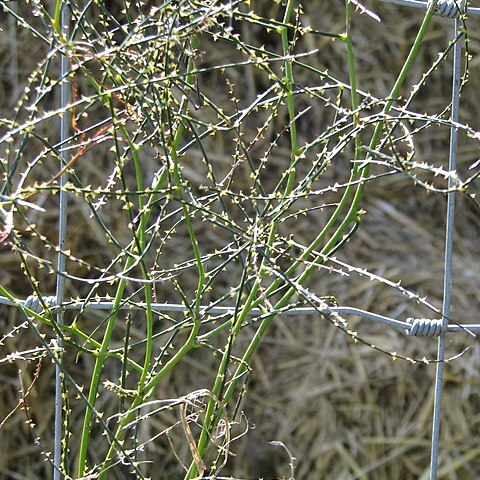Liane with slender to stout stems, often ± leafless and forming a low bush of intertwining branchlets in exposed sites; stems terete, hairy when young; armature of short, curved (sometimes almost straight), yellow prickles. Lvs palmate; leaflets 3-(5), glabrous or rarely with scattered hairs on veins, serrate to crenate-serrate; terminal leaflet lamina ovate-lanceolate to lanceolate, often lobed or much reduced, often to midrib only, up to 70 × 20-(40) mm, with petiolule (10)-30-200 mm long. Infl. a many-flowered panicle up to 5-(12) cm long. Petals yellowish. Drupelets orange-red.
A creeping vine. The stems are like a bush of tangled barb wire. In forest locations it developed long leaves, flowers and fruit.

